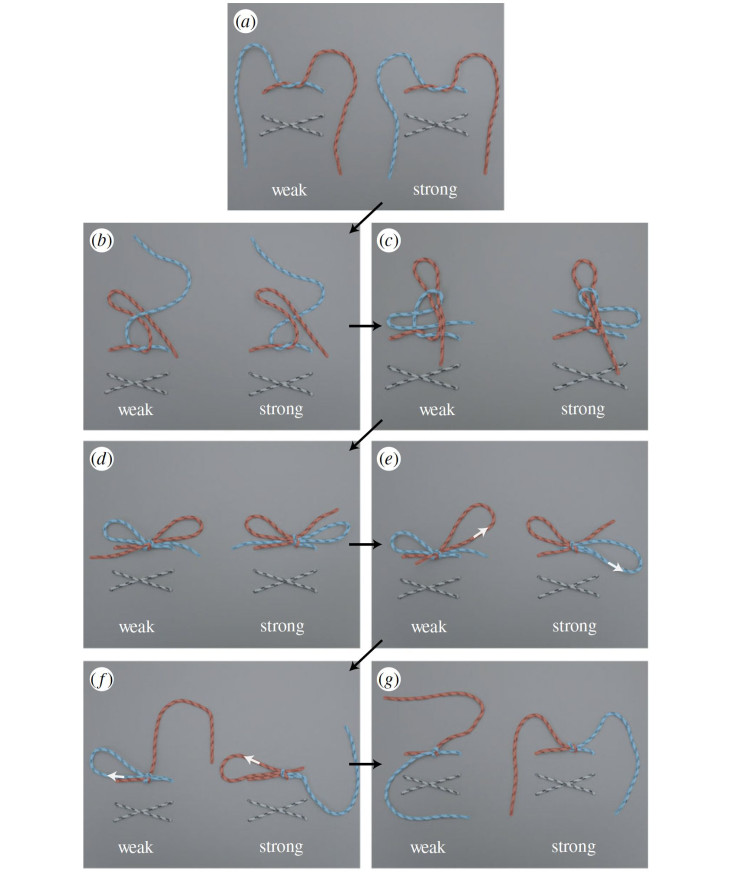Why Do Shoe Lace Knots Untie Themselves? Scientists Claim To Know

Even if you don’t wear lace-up shoes regularly, you are probably still quite familiar with the experience of a knot in your shoe string coming undone, irrespective of how well you thought you had tied it when putting the shoes on. The common occurrence leads to an equally common question, one that isn’t always asked out aloud: why did the knot come undone?
Researchers at the University of California, Berkeley, decided to find the answer, which was published Tuesday in the journal Proceedings of the Royal Society A. Graduate student Christine Gregg, a co-author of the study and also a runner, got on treadmill while her colleagues filmed her shoes. The footage was then played back in slow motion and analyzed.
In simple words, what happens is this: a combination of “stomping and whipping forces” behaves the same way a hand would, making the knot grow loose and then pulling on the laces to unravel the knot.
A statement from the university explains this in somewhat more scientific terms: “When running, your foot strikes the ground at seven times the force of gravity. The knot stretches and then relaxes in response to that force. As the knot loosens, the swinging leg applies an inertial force on the free ends of the laces, which rapidly leads to a failure of the knot in as few as two strides after inertia acts on the laces.”
But the study has implications beyond just answering the seemingly mundane question of why show laces come undone.
“When you talk about knotted structures, if you can start to understand the shoelace, then you can apply it to other things, like DNA or microstructures, that fail under dynamic forces. This is the first step toward understanding why certain knots are better than others, which no one has really done,” Christopher Daily-Diamond, study co-author and a graduate student at Berkeley, said in the statement.

Studying two different ways to tie knots in shoe laces, one of which is weak and the other strong, the team found both those knots come undone, albeit at different time scales.
Oliver O’Reilly, a Berkeley professor of mechanical engineering, whose lab conducted the research, said in the statement: “We were able to show that the weak knot will always fail and the strong knot will fail at a certain time scale, but we still do not understand why there’s a fundamental mechanical difference between those two knots.”
The researchers extended the experiment by adding weights to the free ends of the knots to increase inertia, as well as swinging the knots from an impacting pendulum and using a variety of laces. More research needs to be carried out to understand all the variables involved, they said.
© Copyright IBTimes 2024. All rights reserved.











